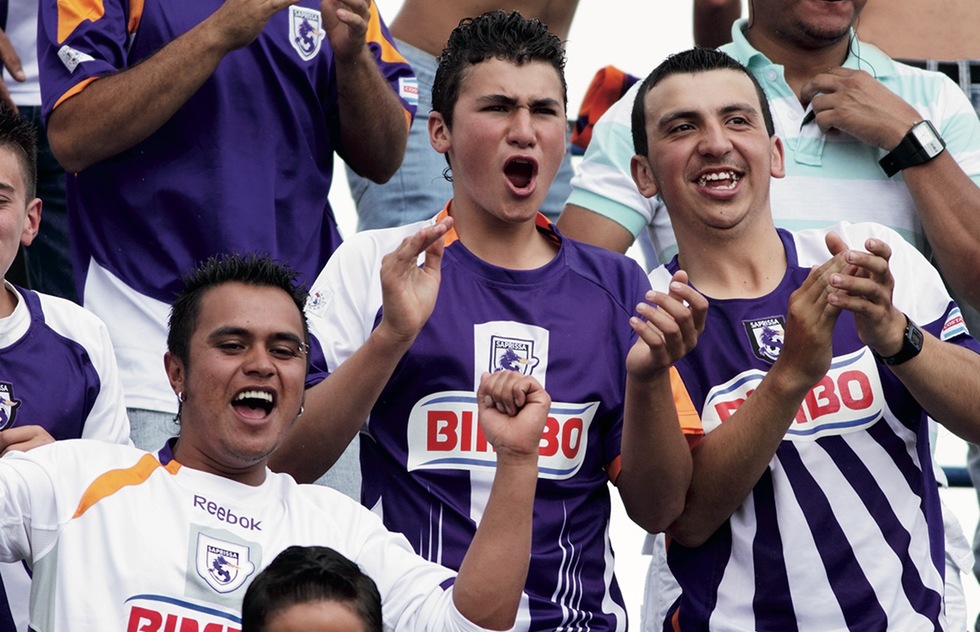Because of the chaos and pollution, you’ll probably want to get out of the city before undertaking anything too strenuous. But if you want to brave the elements, San José does have a few outdoor activities to enjoy.
Parque La Sabana ★★ (La Sabana Park, at the western end of Paseo Colón), formerly San José’s international airport, is the city’s center for active sports and recreation. Here you’ll find jogging trails, a banked bicycle track, soccer fields, a roller-rink, a few public tennis courts, and the huge National Stadium. Aside from events at the stadium, all the facilities are free and open to the public. On weekends, you’ll usually find free aerobic, yoga, or dancercise classes taking place. Families gather for picnics, people fly kites, pony rides are available for the kids, and everyone strolls through the outdoor sculpture garden. If you really want to experience the local culture, try getting into a pickup soccer game. However, be careful in this park, especially at dusk or after dark, when it becomes a favorite haunt for youth gangs and muggers.
Bird-Watching -- Serious birders will want to head out of San José, but it is still possible to see quite a few species in the metropolitan area. Two of the best spots for urban bird-watching are the campus at the University of Costa Rica, in the eastern suburb of San Pedro, and Parque del Este ★, located a little farther east on the road to San Ramón de Tres Ríos. You’ll see a mix of urban species, and if you’re lucky, you might spy a couple of hummingbirds or even a blue-crowned motmot. To get to the university campus, take any San Pedro bus from Avenida Central between calles 9 and 11. To get to Parque del Este, take the San Ramón/Parque del Este bus from Calle 9 between avenidas Central and 1.
Bullfighting -- While traditional bullfighting is a blood-and-gore/life-and-death confrontation, Ticos just like to tease the bull (killing is not permitted). Las Corridas a la Tica (Costa Rican bullfighting) is a popular and frequently comic stadium event. In a typical corrida (bullfight), anywhere from 50 to 150 toreadores improvisados (literally, “improvised bullfighters”) stand in the ring waiting for the bull. What follows is a slapstick scramble to safety whenever the bull heads toward a crowd of bullfighters. The braver bullfighters try to slap the bull’s backside as the beast chases down one of his buddies.
You can see a bullfight during the various Festejos Populares (City Fairs) around the country. The country’s largest Festejos Populares are in Zapote, a suburb east of San José, during Christmas week and the first week in January. Admission is C8,000 to C12,000. This is a purely seasonal activity and occurs in San José only during the Festejos. However, nearly every little town around the country has yearly festejos. These are spread out throughout the year. Ask at your hotel; if your timing’s right, you might be able to take in one of these.
Jogging -- Try Parque La Sabana, mentioned above, or head to Parque del Este, east of town in the foothills above San Pedro. Take the San Ramón/Parque del Este bus from Calle 9 between avenidas Central and 1. It’s never a good idea to jog at night, on busy streets, or alone, particularly if you’re a woman. And remember, Tico drivers are not accustomed to joggers on residential streets, so don’t expect drivers to give you a wide berth.
Soccer (Fútbol) -- Ticos take their fútbol seriously. Costa Rican professional soccer is some of the best in Central America, and the national team, or Sele (selección nacional), qualified for the World Cup in 2002 and 2006, although they failed to qualify for the 2010 World Cup in South Africa, they did qualify for the 2014 in Brazil.
The local professional soccer season runs from August through June, with a break for Christmas and New Year's, and separate championship playoffs every December and July. The main San José team is Saprissa (affectionately called El Monstruo, or “The Monster”). Saprissa’s stadium is in Tibás (tel. 2240-4034; www.saprissa.co.cr; take any Tibás bus from Calle 2 and Av. 5). Games are often held on Sunday at 11am, but occasionally are scheduled for Saturday afternoon or Wednesday evening. Check the local newspapers for game times and locations.
International and other important matches are held in the National Stadium on the northeastern corner of Parque La Sabana.
Aside from major international matches at the National Stadium, you don’t need to buy tickets in advance. Tickets generally run between C1,500 and C10,000. It’s worth paying a little extra for sombra numerado (reserved seats in the shade). This will protect you from both the sun and the more rowdy aficionados. Periodic outbursts of violence, both inside and outside the stadiums, have marred the sport here, so be careful. Other options include sombra (general admission in the shade), palco and palco numerado (general admission and reserved mezzanine), and sol general (general admission in full sun).
It is possible to buy tickets to most sporting events in advance from E-Ticket (www.eticket.cr), but the site is entirely in Spanish.
Note: This information was accurate when it was published, but can change without notice. Please be sure to confirm all rates and details directly with the companies in question before planning your trip.









